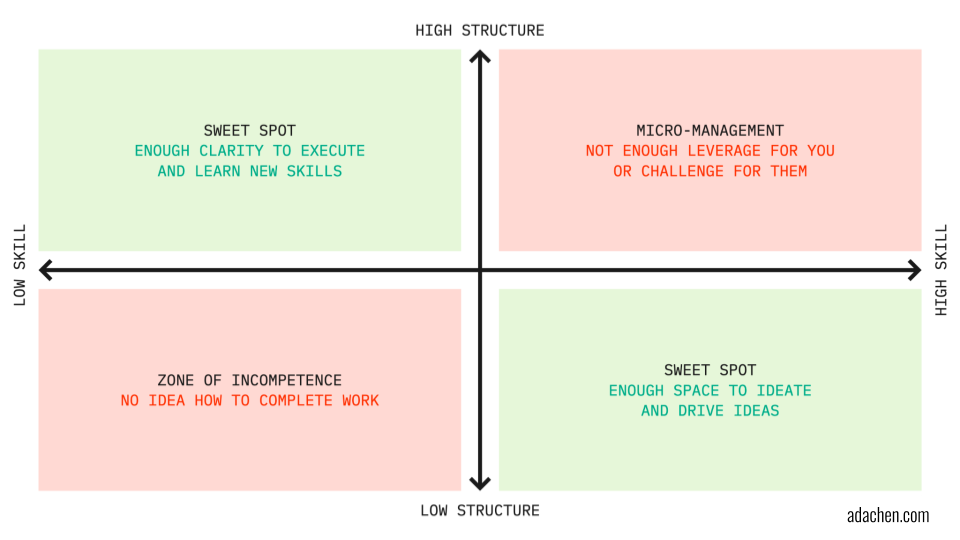“If you want a thing done well, do it yourself”
If you, like Napoleon Bonaparte, have ever reached this conclusion, you are not alone. Delegating effectively is a struggle and it often feels faster and better to do it yourself.
The challenge is the devil is in the details on how to effectively delegate.
Make your expectations clear
Failure point one: it’s not clear what you expect, or context is lacking to execute. Delegating is like outlining a box for someone else to fill in. In order for delegation to be effective, it must be clear:
- goal – the problem you’re solving
- context – the relevant information or skills they need to complete the task
- metric – how you evaluate whether the goal is met
- timeframe – when you need the task complete
What you can do to check this: It’s a great idea to ask after you’ve shared a request if your expectations are clear.
- Validate clarity: Does it make sense what I’m asking you for?
- Check on next steps: Let’s talk through how to get this done. What do you think the next steps are?
Match the level of structure to the recipient
Failure point two is that you’re providing too much or too little structure to get the task done.
I define structure here as the level of specific detail and open-endedness you’re providing with the task. Here are some examples of delegating an international payments project at different levels of structure.
| Structure | Example |
| Low | I’d like you to spend time this quarter figuring out some ideas on how our international payments strategy can unlock more revenue or reduce cost. |
| Medium | I want to track down opportunities in international payments. I want to understand our existing costs to see if we can reduce them, and also look at opening up new currencies. Can you look into it and give me an update next time we meet? |
| High | I want to improve our ability to reach international customers. I’d like you to talk to Sam for a list of the top 5 non-US countries that we don’t currently support. Then identify 2-3 providers for each country we could partner with for payments. Can you give me an update next week when we meet? |
As the ability of your recipient goes up, the level of structure should go down. When level and ability don’t match, failure ensues. Another way to think about this is spelling out a highly structured task to VP should be very different from your college intern!

If you provide too much structure to someone of high ability (e.g., an expert in the area), you’re missing out:
- there may be more optimal ways to achieve the spirit of your ask that you’re not even aware of
- you’re perceived as micro-manager
If you draw too little structure to someone (e.g., a new college grad), you’re missing out:
- they deliver the wrong product or miss a deadline because they’re missing information or ability
- you’re perceived as handwavey/confusing
One particular challenge at startups is managers often have teams at all levels of ability. In corporate teams where VPs manage Directors, Directors manage Managers, etc., it’s usually much easier to master one mode of delegation and stick with it. When you are managing a diverse team, it’s especially important to consider how you’re structuring your asks to get the results you’re hoping for.
What you can do to check this: The resentment of being too vague or micro-managing can build up over time, so it’s helpful to talk through tasks after they’ve been completed. Some tactics that may be helpful:
- Sharing feedback: “I want to give you some feedback on this… ” and discuss how any expectations were not met, and ask what you could have done to help.
- Mine for ideas: My goal with this project was X. Do you have any ideas on how we could have done this differently?
The takeaway? Make sure you’re setting clear expectations when you ask others to do things and tailor your ask to the recipient’s ability.
